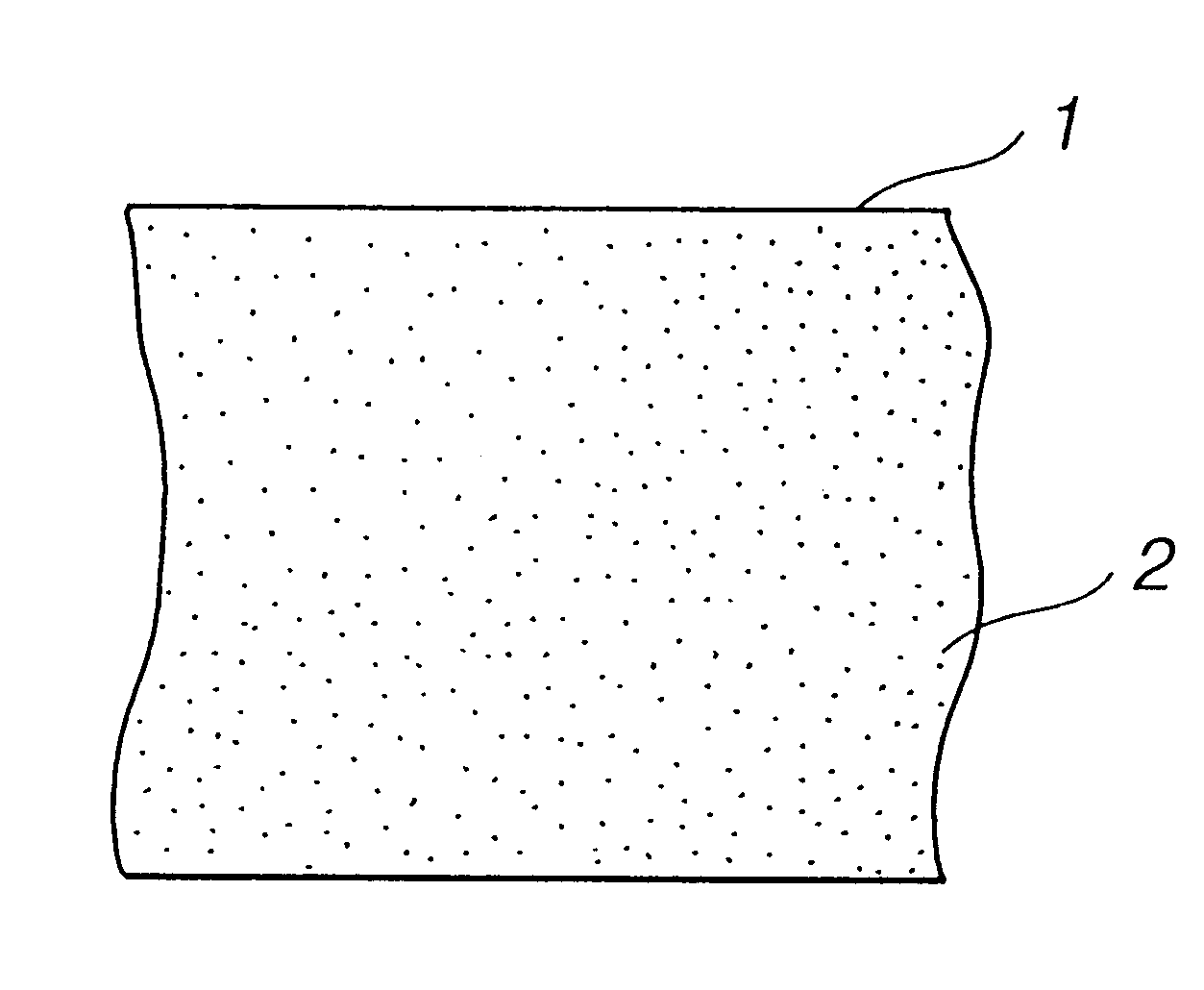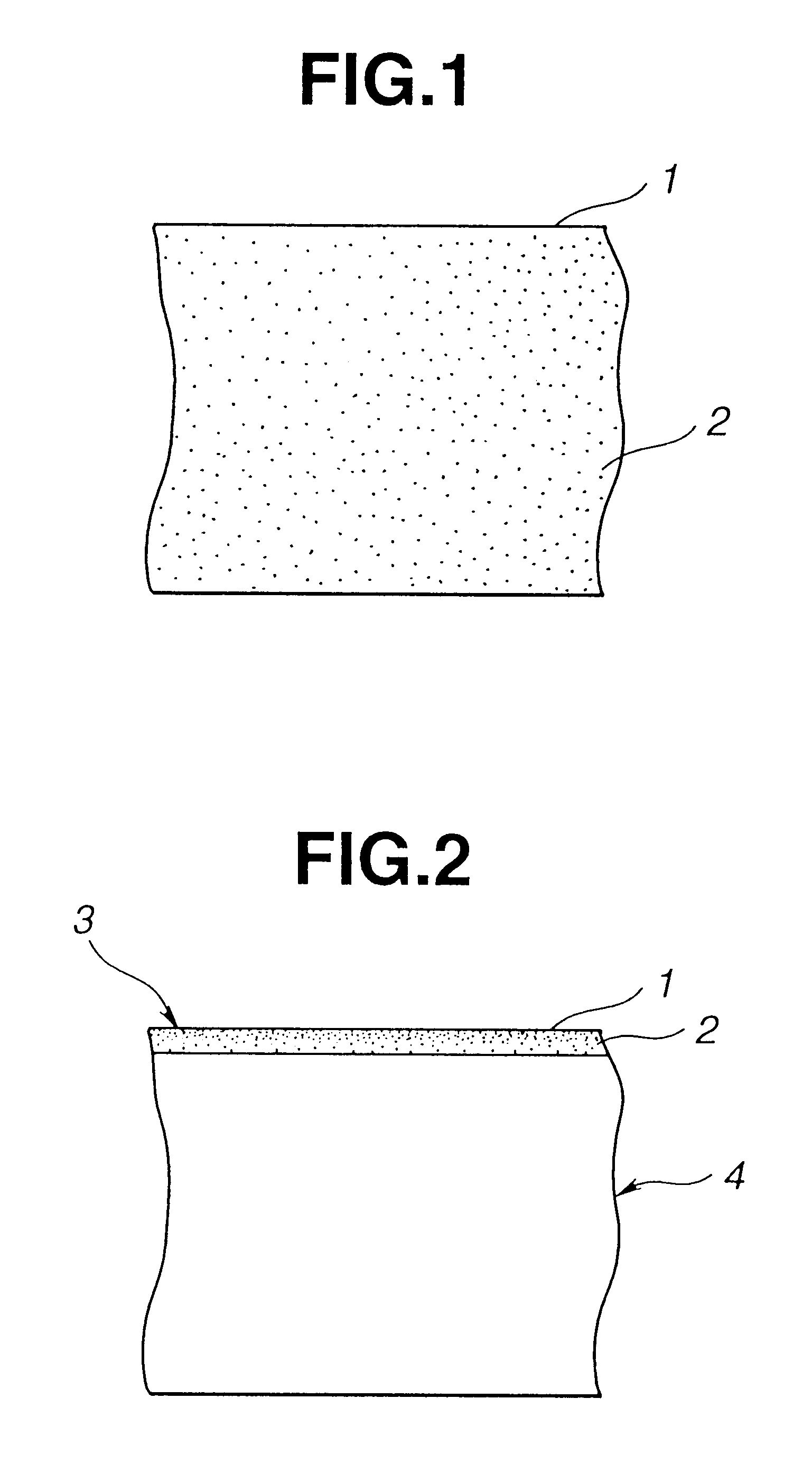Plastic window panel and process for producing same
a technology of plastic window panels and window panels, which is applied in the direction of pretreatment surfaces, tyre parts, synthetic resin layered products, etc., can solve the problems of difficult to secure a field of view, difficult to apply organic glass panels to large-size windows of automotive vehicles, and difficult to achieve the effect of organic glass panels
- Summary
- Abstract
- Description
- Claims
- Application Information
AI Technical Summary
Benefits of technology
Problems solved by technology
Method used
Image
Examples
example 1
Benzoyl peroxide in an amount of 0.5 part by weight was mixed in 100 parts by weight of methyl methacrylate to form a reaction mixture. Polymerization of the reaction mixture was made upon heating the reaction mixture at 90.degree. C. while methyl ethyl ketone (solvent) in which silica particulate (having a particle size ranging from 10 to 20 nm) had been dispersed was slowly added dropwise into the reaction mixture. After about 1 hour, ethanol as a solvent for solidification was added to the reaction mixture so as to sediment silica particulate and acrylic resin. As a result, a resin composition was obtained to have a ratio (in wt %) between silica particulate and acrylic resin (polymethyl methacrylate resin) being 40 / 60.
The thus obtained resin composition was dried and formed into a specimen for a plastic window panel by a melting-extrusion molding. The thus formed specimen was subjected to measurements for a total light transmittance, a Rockwell hardness, a flexural strength, a f...
example 2
Methyl ethyl ketone (solvent) in which silica particulate (having a particle size ranging from 10 to 20 nm) had been dispersed to have a solid content of 66.7 parts by weight was added dropwise into a polymethyl methacrylate solution which had been prepared by dissolving polymethyl methacrylate in methyl ethyl ketone to have a solid content of 100 parts by weight, thus to form a mixture solution. The mixture solution was stirred and mixed with each other. Then, ethanol as a solvent for solidification was added to the mixture solution so as to sediment silica particulate and polymethyl methacrylate resin. As a result, a resin composition was obtained to have a ratio (in wt %) between silica particulate and acrylic resin being 40 / 60.
The thus obtained resin composition was dried and formed into a specimen for a plastic window panel by a melting-extrusion molding. The thus formed specimen was subjected to measurements for a total light transmittance, a Rockwell hardness, a flexural stre...
example 3
Methyl ethyl ketone (solvent) in which silica particulate (having a particle size ranging from 100 to 200 nm) has been dispersed in solid content of 66.7 parts by weight was added dropwise into a polymethyl methacrylate solution which had been prepared by dissolving polymethyl methacrylate in solid content of 100 parts by weight, so as to form a mixture solution. The mixture solution was stirred and mixed with each other. Then, ethanol as a solvent for solidification was added to the mixture solution so as to sediment silica particulate and polymethyl methacrylate resin. As a result, a resin composition was obtained to have a ratio (in wt %) between silica particulate and acrylic resin being 40 / 60.
The thus obtained resin composition was dried and formed into a specimen for a plastic window panel by a melting-extrusion molding. The thus formed specimen was subjected to measurements for a total light transmittance, a Rockwell hardness, a flexural strength, a flexural elastic modulus, ...
PUM
| Property | Measurement | Unit |
|---|---|---|
| particle size | aaaaa | aaaaa |
| particle size | aaaaa | aaaaa |
| temperature | aaaaa | aaaaa |
Abstract
Description
Claims
Application Information
 Login to View More
Login to View More - R&D
- Intellectual Property
- Life Sciences
- Materials
- Tech Scout
- Unparalleled Data Quality
- Higher Quality Content
- 60% Fewer Hallucinations
Browse by: Latest US Patents, China's latest patents, Technical Efficacy Thesaurus, Application Domain, Technology Topic, Popular Technical Reports.
© 2025 PatSnap. All rights reserved.Legal|Privacy policy|Modern Slavery Act Transparency Statement|Sitemap|About US| Contact US: help@patsnap.com


